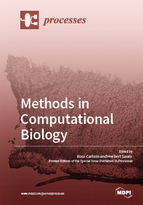Methods in Computational Biology
A special issue of Processes (ISSN 2227-9717). This special issue belongs to the section "Biological Processes and Systems".
Deadline for manuscript submissions: closed (31 December 2018) | Viewed by 77303
Special Issue Editors
Interests: systems biology; microbial consortia; biofuels
Special Issues, Collections and Topics in MDPI journals
Special Issue Information
Dear Colleagues,
Rapid development of omics technologies has created large datasets and a need for computational biology approaches that can leverage this data to extract and test biological theory. This is a major challenge for the life sciences including the medical, environmental, and bioprocess fields.
The focus of this special issue is methods in computational biology which can extract and test theory using large datasets. A primary goal of this issue is the communication of computational biology methods with enough detail to permit reproduction of results. Topics of interest span the gamut of fundamental and applied biology and can include analyses of medical, environmental and bioprocess systems. Modeling approaches of interest include, but are not limited to, flux balance analysis, elementary flux mode analysis, agent-based modeling as well as other dynamic modeling approaches. Papers combining experimental and computational studies are highly encouraged as are manuscripts that propose standards for model writing, storage and distribution. This issue aims to integrate highly interdisciplinary researchers such as biologists, computer scientists, engineers and mathematicians who focus on advances in biological systems analysis.
The issue is coordinated with the Metabolic Pathway Analysis 2017 conference held in Bozeman MT and select IMAG MultiScale Modeling (MSM) working groups.
Prof. Dr. Ross Carlson
Dr. Herbert Sauro
Guest Editors
Manuscript Submission Information
Manuscripts should be submitted online at www.mdpi.com by registering and logging in to this website. Once you are registered, click here to go to the submission form. Manuscripts can be submitted until the deadline. All submissions that pass pre-check are peer-reviewed. Accepted papers will be published continuously in the journal (as soon as accepted) and will be listed together on the special issue website. Research articles, review articles as well as short communications are invited. For planned papers, a title and short abstract (about 100 words) can be sent to the Editorial Office for announcement on this website.
Submitted manuscripts should not have been published previously, nor be under consideration for publication elsewhere (except conference proceedings papers). All manuscripts are thoroughly refereed through a single-blind peer-review process. A guide for authors and other relevant information for submission of manuscripts is available on the Instructions for Authors page. Processes is an international peer-reviewed open access monthly journal published by MDPI.
Please visit the Instructions for Authors page before submitting a manuscript. The Article Processing Charge (APC) for publication in this open access journal is 2400 CHF (Swiss Francs). Submitted papers should be well formatted and use good English. Authors may use MDPI's English editing service prior to publication or during author revisions.
Keywords
- computational biology
- systems biology
- stoichiometric modeling
- synthetic biology
- synthetic ecology
- omics analysis
- computational methods







